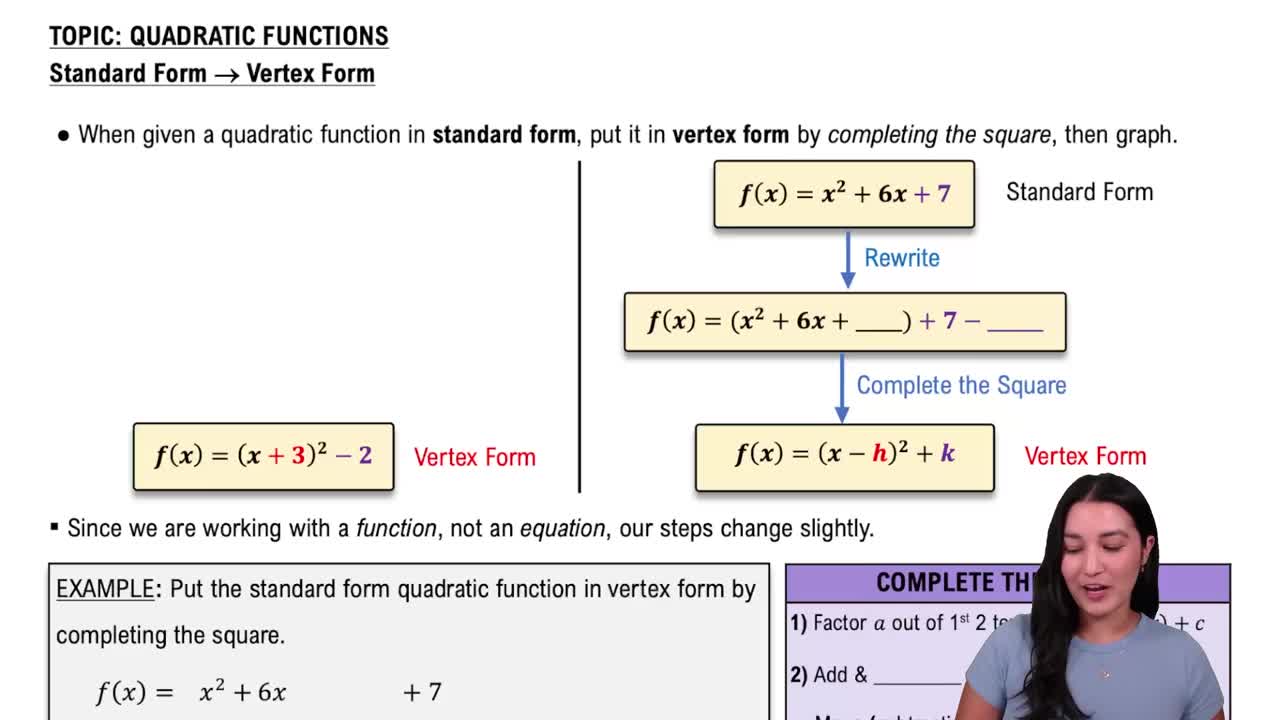4. Polynomial Functions
Quadratic Functions
Learn with other creators
Practice this topic
- Multiple Choice
Identify the ordered pair of the vertex of the parabola. State whether it is a minimum or maximum.
981views9rank - Multiple Choice
Where is the axis of symmetry located on the given parabola?
1010views7rank - Multiple Choice
Graph the given quadratic function. Identify the vertex, axis of symmetry, intercepts, domain, range, and intervals for which the function is increasing or decreasing.
991views6rank - Multiple Choice
Graph the given quadratic function. Identify the vertex, axis of symmetry, intercepts, domain, range, and intervals for which the function is increasing or decreasing.
1628views1rank - Textbook QuestionIn Exercises 1–4, the graph of a quadratic function is given. Write the function's equation, selecting from the following options.1243views
- Textbook Question
In Exercises 1–4, use the vertex and intercepts to sketch the graph of each quadratic function. Give the equation for the parabola's axis of symmetry. Use the graph to determine the function's domain and range.
839views - Textbook Question
In Exercises 1–4, use the vertex and intercepts to sketch the graph of each quadratic function. Give the equation for the parabola's axis of symmetry. Use the graph to determine the function's domain and range. f(x) = (x + 4)^2 - 2
933views - Textbook Question
In Exercises 1–4, use the vertex and intercepts to sketch the graph of each quadratic function. Give the equation for the parabola's axis of symmetry. Use the graph to determine the function's domain and range.
991views














